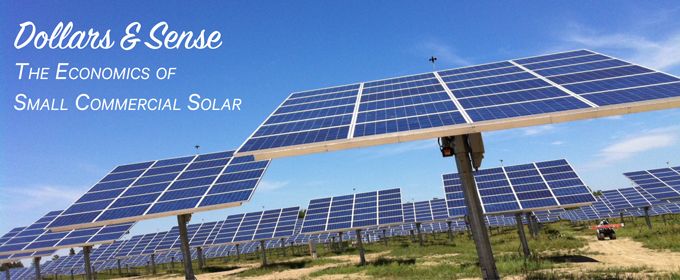Solar projects can be a great investment for many businesses and offer a solid ROI, but it takes time and energy to put together a project that works for all the interested parties—the customer, the bank, and the installer.
Contributed by | AllEarth
Reprinted with permission from AllEarth's blog:
Project Economics: The Variables Driving System Costs
Any financial model needs to take into account a number of factors, and with this information you can make an informed decision on whether a project makes economic sense. Here’s a quick overview of the variables that will drive the economics of any project.
PRODUCTION GOAL
How much energy is the customer looking to produce? What percentage of their total energy usage are they looking to offset?
REAL ENERGY COSTS
The starting point for any discussion is the current cost of energy in your region in $/kWh. From there, you’ll need to estimate what the costs will be 3-5 years out.
SYSTEM EFFICIENCY
It’s important to look at the system in terms of the dynamic output ($/kWh) of the system over time, which provides greater clarity on the value of the system than simply focusing on the upfront installed cost ($/kW).
SYSTEM RELIABILITY
Accounting for the potential failure of components and the resulting lost production is critical to designing a system to meet power production targets.
TAX CREDITS
The Federal Income Tax Credit is currently at 30%. In addition, every state has its own set of incentives and credits which may impact the economics of any potential project.
DEPRECIATION
Unlike residential customers, commercial customers can capitalize the system and may qualify for the depreciation credits that apply for any capital investment.
FINANCING COSTS
Interest rates continue to be very low but, nonetheless, there is a cost for the money borrowed to buy the system which must be taken into account.
NET METERING
It’s important to know if the local power company offers net metering to generate revenue from any excess power production.
UPFRONT COSTS
Capturing all the upfront costs—design, permitting, component sourcing—reduces the chance of having any last minute surprises.
SITE WORK & INSTALLATION
The biggest variable for any project is the time and cost it takes to prepare the site and do the actual installation. As you design and execute the project, maintain a clear timeline to keep your schedule, and your costs, on track.
O & M COSTS
When looking at operations and maintenance, the focus should be in minimizing the exposure and risk of major expenses or lost production, taking into account factors such as reliability, warranty coverage, and maintenance requirements.
ROI/PAYBACK
After all the numbers are compiled you can get a clear sense on the ROI for the project and how long it will take for the system to pay for itself.
A Smart Investment
Solar projects can be a great investment for many businesses and offer a solid ROI, but it takes time and energy to put together a project that works for all the interested parties—the customer, the bank, and the installer. In the end, it is a rare customer, or banker for that matter, who will make an investment in a solar system if the economics do not make sense.
Or put another way, is this a project that you would invest your own money in? If your answer is no, then you need to go back and look at the factors that make it problematic.
The content & opinions in this article are the author’s and do not necessarily represent the views of AltEnergyMag
Comments (0)
This post does not have any comments. Be the first to leave a comment below.

